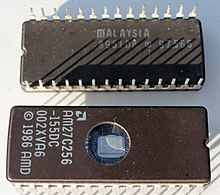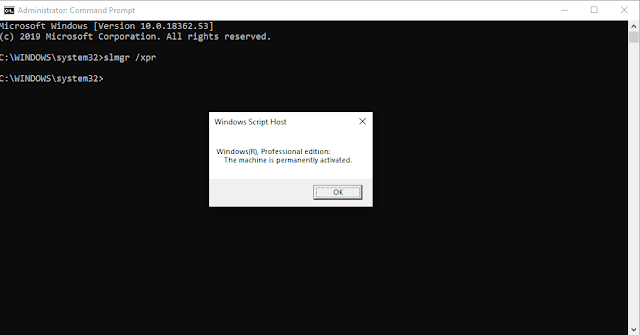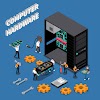From Wikipedia, the free encyclopedia
Jump to navigationJump to search
EFI's position in the software stack
The Unified Extensible Firmware Interface (UEFI)[1] is a specification that defines a software interface between an operating system and platform firmware. UEFI replaces the legacy Basic Input/Output System (BIOS) firmware interface originally present in all IBM PC-compatible personal computers,[2][3] with most UEFI firmware implementations providing support for legacy BIOS services. UEFI can support remote diagnostics and repair of computers, even with no operating system installed.[4]
Intel developed the original Extensible Firmware Interface (EFI) specifications. Some of the EFI's practices and data formats mirror those of Microsoft Windows.[5][6] In 2005, UEFI deprecated EFI 1.10 (the final release of EFI). The Unified EFI Forum is the industry body that manages the UEFI specifications throughout.
From Wikipedia, the free encyclopedia
Jump to navigationJump to searchThis article is about the BIOS as found in personal computers. For other uses, see
Bios (disambiguation).
A pair of AMD BIOS chips for a Dell 310 computer from the late 1980s In computing, BIOS (, BY-oss, -ohss; an acronym for Basic Input/Output System and also known as the System BIOS, ROM BIOS or PC BIOS) is firmware used to perform hardware initialization during the booting process (power-on startup), and to provide runtime services for operating systems and programs.[1] The BIOS firmware comes pre-installed on a personal computer's system board, and it is the first software to run when powered on. The name originates from the Basic Input/Output System used in the CP/M operating system in 1975.[2][3] The BIOS originally proprietary to the IBM PC has been reverse engineered by some companies (such as Phoenix Technologies) looking to create compatible systems.[4] The interface of that original system serves as a de facto standard.
The BIOS in modern PCs initializes and tests the system hardware components, and loads a boot loader from a mass storage device which then initializes an operating system. In the era of DOS, the BIOS provided BIOS interrupt calls for the keyboard, display, storage, and other input/output (I/O) devices that standardized an interface to application programs and the operating system. More recent operating systems do not use the BIOS interrupt calls after startup.[5]
Most BIOS implementations are specifically designed to work with a particular computer or motherboard model, by interfacing with various devices that make up the complementary system chipset. Originally, BIOS firmware was stored in a ROM chip on the PC motherboard. In modern computer systems, the BIOS contents are stored on flash memory so it can be rewritten without removing the chip from the motherboard. This allows easy, end-user updates to the BIOS firmware so new features can be added or bugs can be fixed, but it also creates a possibility for the computer to become infected with BIOS rootkits. Furthermore, a BIOS upgrade that fails may brick the motherboard.
Unified Extensible Firmware Interface (UEFI) is a successor to the legacy PC BIOS, aiming to address its technical limitations.[6]
BIOS?
বায়োস (BIOS) এর পূর্ণরূপ বেসিক ইনপুট আউটপুট সিস্টেম (Basic Input Output System)। বায়োস হল কোডের একটি ছোট অংশ বা প্রোগ্রাম যা কম্পিউটারের মাদারবোর্ডে রমের মতন চিপের ভিতরে থাকে। একে মাদারবোর্ডের ফার্মওয়্যারও বলা হয়। কম্পিউটারের পাওয়ার বাটন প্রেস করলে এই প্রোগ্রামটি সর্বপ্রথম চালু হয়। বায়োস অনেক সাধারণ কাজ করে থাকে। কিন্তু কম্পিউটারের জন্য এই কাজগুলো অত্যন্ত গুরুত্বপূর্ণ। কম্পিউটার চালু করার প্রক্রিয়া চলাকালীন সময়ে এটি হার্ডওয়্যার ইনিশিয়ালাইজেশন করে। এর মাধ্যমে সফটওয়্যার হার্ডওয়্যারের সাথে সংযোগ স্থাপন করে।
যখন কম্পিউটারের
পাওয়ার বাটন প্রেস করা হয় তখন পাওয়ার সাপ্লাই মাদারবোর্ডে বিদ্যুৎ সরবরাহ করে।
যার ফলে কম্পিউটার চালু করার প্রক্রিয়া সক্রিয় হয়। প্রথমেই BIOS মাদারবোর্ডের সঙ্গে যুক্ত থাকা সকল হার্ডওয়্যারকে চালু করে। এরপর
পোস্ট (POST) এর মাধ্যমে সকল হার্ডওয়্যার ঠিক ভাবে কাজ
করছে কিনা তা পরীক্ষা করে। পোস্টের কাজ শেষ
হলে মনিটরের পর্দায় বায়োস সেটিংসে যাওয়ার উপায় দেখায়। বায়োস সেটিংস শুধুমাত্র
কিবোর্ড দিয়ে নিয়ন্ত্রণ করা যায়।

সেটিংসে যাওয়ার জন্য কিবোর্ড থেকে নিদ্রিষ্ট কি চাপতে হয়। মাদারবোর্ড প্রস্তুতকারক কোম্পানির উপর ভিত্তি করে এই কি ভিন্ন হয়ে থাকে। সেটিংসে কিছু গুরুত্বপূর্ণ তথ্য নির্বাচন করা যায়। যেমনঃ সময় এবং তারিখ, বুট অর্ডার ইত্যাদি। বুট অর্ডার মনে অপারেটিং সিস্টেম শুরু করার জন্য কোন ডিভাইসটিতে প্রথমে খুঁজবে। সাধারণত বুট অর্ডারে প্রথমে হার্ড ড্রাইভ নির্বাচন করা থাকে এরপর অন্য কোন ডিভাইস। যদি অপারেটিং সিস্টেম নতুন করে সেটআপ করার প্রয়োজন হয় তবে বুট অর্ডারে প্রথমে পেনড্রইভ বা সিডি/ডিভিডি নির্বাচন করতে হয়। সেটিংসে যাওয়ার জন্য কিবোর্ড থেকে নিদ্রিষ্ট কি না চাপলে বায়োস অপারেটিং সিস্টেম শুরু করার জন্য ডিভাইস খুঁজতে থাকে। ডিভাইস খুঁজে পেলে অপারেটিং সিস্টেম শুরু করে। বর্তমান সময়ের অপারেটিং সিস্টেম গুলো হার্ডওয়্যারের সঙ্গে সরাসরি সংযোগ স্থাপন করতে পারে। তাই এরপর বায়োসের আর কোন কাজ থাকে না।
ইউইএফআই (UEFI) কি?
ইউইএফআই (UEFI) এর পূর্ণরূপ ইউনিফাইড এক্সটেনসিবল ফার্মওয়্যার ইন্টারফেস (Unified Extensible Firmware Interface)। ইউইএফআই (UEFI) হল বায়োসের নতুন সংস্করণ। আধুনিক মাদারবোর্ড গুলোতে এটি ব্যবহার করা হয়। এখন প্রশ্ন হল বায়োস থাকতে এটি নতুন করে তৈরী করার কি প্রয়োজন ছিল। যেহেতু বায়োস পুরাতন কম্পিউটারে ব্যবহার করা হত, তাই এতে কিছু সীমাবদ্ধতা ছিল। এর মধ্যে একটি হল ড্রাইভ সমর্থন করা। পূর্বে কম্পিউটার গুলোর হার্ড ড্রাইভে এমবিআর বা মাস্টার বুট রেকর্ড পার্টিশন স্কিম ব্যবহার করা হত। এই পার্টিশন স্কিম শুধু মাত্র ২ টেরাবাইট এর হার্ড ড্রাইভে ব্যবহার করা যায় এবং ৪ টি প্রাইমারি পার্টিশন তৈরী করা যায়। আধুনিক সময়ে এই সব সমস্যা সমাধানের জন্য ইউইএফআই এবং সঙ্গে নতুন পার্টিশন স্কিম জিপিটি তৈরী করা হয়েছে। এর মাধ্যমে টেরাবাইট কেন পেটাবাইট জেটাবাইটের মতন হার্ড ড্রাইভ ব্যবহার এবং সর্বোচ্চ ১২৮ টি পার্টিশন তৈরী করা যায়। ইউইএফআই গ্রাফিকাল ইউজার ইন্টারফেস এর সঙ্গে অ্যানিমেশন ব্যবহার করে তৈরি করা হয়েছে। এটি মাউস এবং কিবোর্ড দুটো ব্যবহার করে নিয়ন্ত্রণ করা যায়। এখানে প্রসেসরের তাপমাত্রা, ভোল্টেজ, মাদারবোর্ড ফ্যানের স্পিড সহ আরো অনেক তথ্য সরাসরি দেখা যায়।

ইউইএফআই (UEFI) সেটিংস











